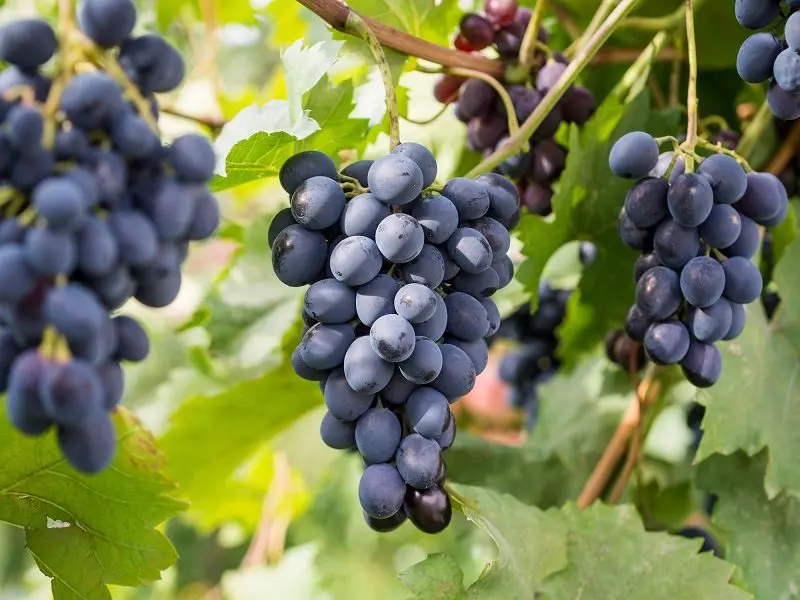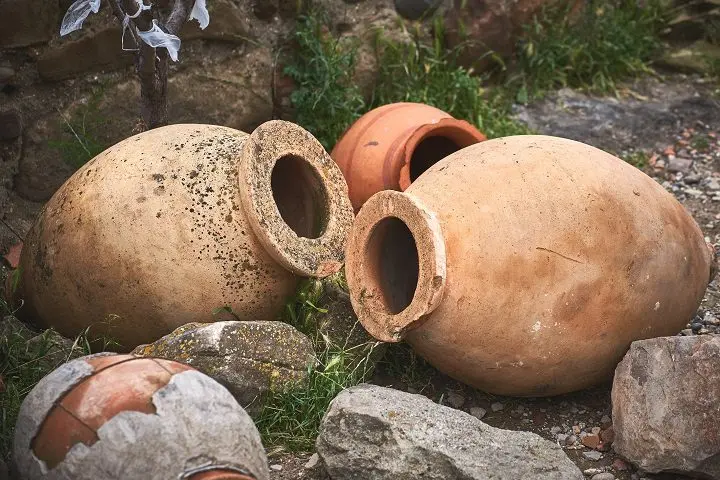Georgian Pirosmani wine is made in the Akhoebi microzone (Alazani Valley region) from Saperavi grapes. This variety is known for making wines of a particularly rich red color, in addition, it performs well in blends, enriching the bouquet and smoothing out the shortcomings of other varieties.
Pirosmani wine belongs to a rare category of naturally semi-dry wines. Due to the unique climate of the region (cold days, night frosts), some of the natural sugar (fructose) remains in the juice after fermentation, so no other sweeteners are required during production.

History
The wine appeared in 1981 and was named after the artist Nikolai (Niko) Pirosmanashvili. This representative of Georgian art was born in 1862 in the province of Tiflis, where he died in 1918. Niko is famous for the fact that he never studied painting and did not receive any significant education at all. The artist worked in the genre of primitivism, but recognition came to him only after his death; during his lifetime, Pirosmanashvili remained an unrecognized genius.

Production technology
Pirosmani is made according to the Imeretian technology: grapes (with a sugar content of at least 20%) are peeled from twigs and crushed. The resulting pulp, directly with bones and skins, is kept for one and a half to two months in qvevri vessels dug into the ground. The result is moderately tart, aromatic wines of bright color.

Sometimes the Kakhetian technology is mistakenly indicated for pirosmani, but it still contradicts the style standards a little: with it, the branches are not separated, and the future wine is aged in vessels at least twice as long.
Of course, not all producers adhere to traditional “recipes”, it is not uncommon for wine to be made in the most ordinary way, fermenting juice in stainless steel vats.
Features
The color of Pirosmani wine is deep, dark, with ruby and garnet flashes. The taste has notes of black cherries, prunes, currants, the strength is 10.5-12.5 degrees, the sugar content is 1.5-2.5%. Red pirosmani goes well with barbecue, fried meat, spicy dishes and thick sauces. Some manufacturers recommend serving it with fruits and desserts. The ideal serving temperature is 16-18 °C.

There is also white pirosmani, which is distinguished by a delicate fruity aroma; the bouquet has tones of honey, citrus, flowers, and honeysuckle. If red wine is better to drink right at dinner or a hearty feast, then white pirosmani is served as an aperitif or a soft drink in summer. This wine creates good gastronomic pairs with lean meat, poultry, fish, salads.
The white variety of Pirosmani was not considered a standard, it is not cited as an example when talking about the art of Georgian winemakers, and it is unlikely that a sommelier will recommend this wine to you for a solemn occasion.

Famous brands of Pirosmani
- “Kartuli Vazi”. The wine is made at the Tiflis wine cellar plant, Rkatsiteli grapes are added to the composition.
- Georgian Royal Wines. Composition: 100% Saperavi, color – with a purple tint, nuances of red berries are felt in the taste. The wine is full-bodied, tannic. Pairs well with fatty and lean meats and cheeses.
“Mikitani”. Buyers note some sour taste.
- “Bethaneli”. The producer describes the variety as “savory and tart”, pointing to notes of pepper and blackberry in the bouquet.
- Other brands: Iveriuli, Kakhuri, Graneli, Badagoni, etc.









